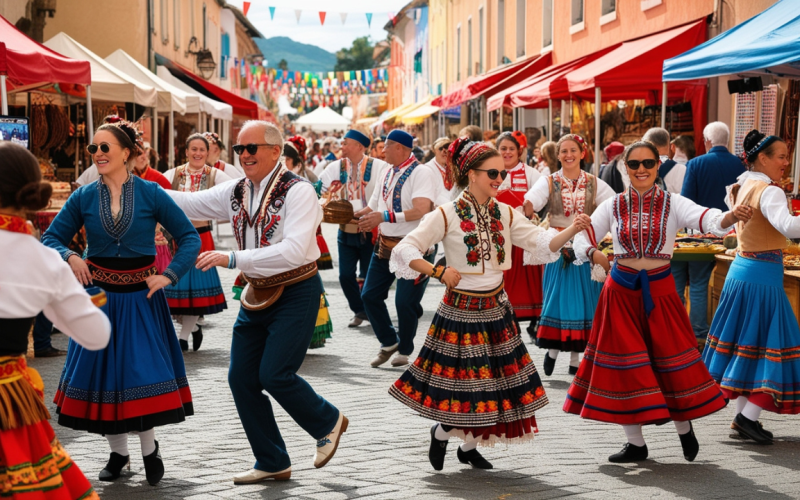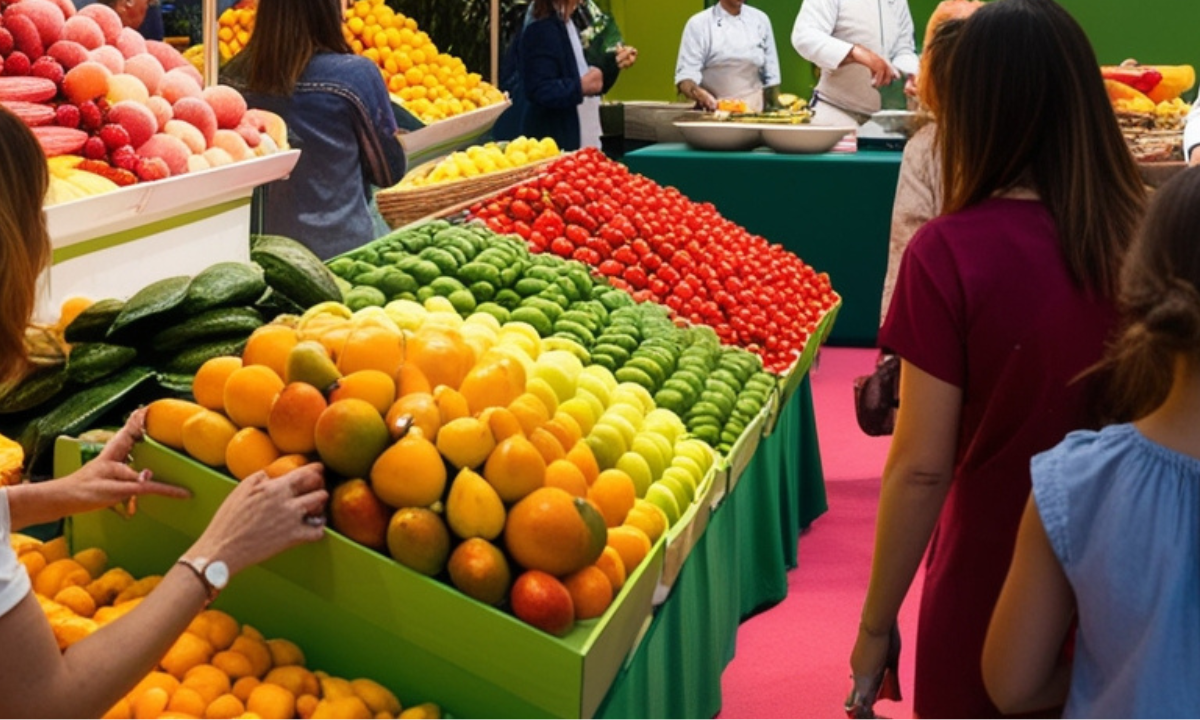Culture is at the heart of every community, shaping who we are, where we come from, and where we’re going. The French phrase “Il Restera Toujours la Culture”, which translates to “It will always remain the culture,” captures the essence of this enduring force.
Despite how much the world changes, culture remains constant, continuously evolving while preserving the values, traditions, and stories that define us. In this article, we will explore the meaning of this phrase and its implications for preserving our cultural heritage in the modern world.
Key Takeaways
- Culture is a key part of identity and belonging.
- History is preserved through cultural practices and expressions.
- Cultural preservation supports diversity and inclusion.
- Innovation and tradition can coexist in culture.
- Festivals and arts are crucial for cultural survival.
What Does “Il Restera Toujours la Culture” Mean?
At its core, “Il Restera Toujours la Culture” reflects the idea that culture, no matter how much the world changes, will always remain as the foundation of who we are.
Culture is more than just a collection of customs and traditions—it is the language, the art, the food, the stories, and the shared experiences that bind people together. It is the very fabric that keeps a society grounded, no matter what forces are at play in the world around it.
As societies grow and evolve, so does their culture. Sometimes, it can seem like the world is shifting faster than ever. But at the heart of these changes, culture holds steady—adapting, growing, and yet always retaining the essence of where it came from.
The Importance of Culture in Our Lives
Culture is central to personal and communal identity. It influences how we see ourselves and how we connect with others. As a society, we rely on our cultural traditions to give us a sense of belonging and continuity. Whether it’s the language we speak, the festivals we celebrate, or the food we eat, culture shapes much of our daily lives.
For example:
- Family Traditions: What your family does on holidays or special occasions.
- Community Values: How communities band together to celebrate or face challenges.
- Cultural Identity: How we identify ourselves based on our background, religion, or ethnicity.
Each of these aspects of culture helps us feel part of something larger than ourselves, binding us to others who share similar experiences.
Cultural Preservation: Why It Matters
Cultural preservation is the act of maintaining and safeguarding cultural practices, traditions, and values for future generations. Without it, we risk losing important aspects of our identity. Culture not only helps define who we are but also helps us understand where we’ve come from. It’s a bridge between the past and the present.
Why Preserving Culture is Essential
- Sustains Diversity: By protecting cultural heritage, we help ensure that diverse traditions continue to thrive.
- Strengthens Identity: Preserving culture builds pride in one’s history and background.
- Teaches History: Cultural practices act as living history lessons, teaching us about the experiences and struggles of previous generations.
While global influences can sometimes threaten local customs, cultural preservation ensures that future generations can experience the richness of their heritage, fostering a greater appreciation for diversity.
Globalization’s Effect on Cultural Identity
One of the key challenges of modern society is balancing the forces of globalization with the preservation of local culture. As technology and media connect us globally, we are exposed to a wide variety of cultures, sometimes leading to cultural homogenization. But does this mean that local cultures are doomed to fade away?
The truth is more nuanced. Globalization can introduce new ideas, technologies, and practices that enrich cultures. Yet, it also poses risks to unique cultural identities. The key lies in how we manage this balance.
How Globalization Impacts Culture
Positive Aspects: Cultural exchange fosters understanding, broadens perspectives, and allows for new innovations that can integrate with traditional practices.
Challenges: With global products, languages, and lifestyles becoming more dominant, smaller, less mainstream cultures face the risk of disappearing.
However, many cultures are resilient. They find ways to incorporate global influences while maintaining their distinct identity. This ongoing process of adaptation is part of what makes culture so dynamic.
The Role of Art, Music, and Literature in Cultural Preservation
Art, music, and literature are powerful forms of cultural expression. They preserve history, convey emotions, and connect people across generations. These creative outlets provide a glimpse into the past, offering valuable insights into the thoughts, struggles, and dreams of those who came before us.
Cultural Expression Through the Arts
Art has always been a reflection of society. From paintings that capture historical moments to music that echoes the pain or joy of an era, these creative outlets help preserve cultural narratives. Through them, we can keep our connection to the past alive.
Art: Whether it’s visual art, theater, or architecture, art captures a snapshot of society’s values and struggles.
Music: Folk music, for instance, is a key part of many cultures’ traditions, telling stories of hardship, love, and resilience.
Literature: Books and poems preserve stories and folklore, passing them down through generations.
Modern Culture: Balancing Innovation and Tradition
In today’s fast-paced world, it’s easy to feel like we must choose between tradition and innovation. But in reality, modern culture often blends both, creating something new while still staying grounded in its roots.
How Tradition and Innovation Coexist
- Fusion Cuisine: Traditional dishes are often adapted to include modern ingredients or cooking techniques, creating new culinary experiences that still respect the past.
- Digital Storytelling: Traditional stories are now shared through digital mediums like social media, making them accessible to younger generations while preserving their cultural significance.
The key is to respect cultural traditions while allowing room for creativity and new ideas. In this way, culture remains vibrant and relevant to today’s world while staying true to its origins.
Cultural Festivals: A Celebration of Identity
Cultural festivals play a major role in preserving and celebrating culture. These events provide a space for people to come together, share their customs, and express pride in their heritage.
Festivals, whether large or small, are opportunities to witness traditional dances, hear ancient songs, eat cultural foods, and learn about history in a fun and engaging way. They serve as living, breathing celebrations of culture, keeping it alive in the hearts and minds of participants.
The Impact of Cultural Festivals
- Building Community: Festivals bring people together, strengthening bonds within a community.
- Educating the Public: These events teach the younger generation about their culture in an engaging and memorable way.
For example, festivals like the San Antonio Fiesta or the Chinese New Year celebrations in various U.S. cities provide important spaces for cultural exchange and preservation. They highlight the diversity of the U.S. while also honoring individual cultural identities.
The Role of Language in Cultural Preservation
Language is one of the most fundamental aspects of culture. It is the primary way in which traditions, beliefs, and stories are passed down from generation to generation. Every language carries unique expressions, idioms, and ways of thinking that reflect the values and experiences of its speakers.
The Power of Language in Preserving Culture
Language is more than just a tool for communication. It is deeply intertwined with identity. A language is a reflection of how people see themselves and their place in the world. When a language is lost, a part of the cultural identity is lost with it.
Additionally, language allows for the expression of cultural concepts that may not have a direct translation in other languages. Words can carry entire meanings related to family, respect, or nature, which may not exist in other cultures.
Efforts are being made worldwide to preserve endangered languages. Initiatives such as language revitalization programs, bilingual educational resources, and digital platforms are helping keep languages alive in modern society.
The Decline of Endangered Languages
With the global dominance of languages like English, many smaller languages are at risk of disappearing. Linguists predict that nearly half of the world’s languages may become extinct by the end of this century. This decline erodes linguistic diversity and weakens the cultural practices tied to these languages. The loss of these languages not only impacts communication but also the preservation of cultural narratives and heritage.
Efforts to revive and protect endangered languages are crucial in reversing this trend. Communities are increasingly leading the charge in language revitalization, ensuring the continuation of their linguistic traditions through educational programs and digital resources.
Cultural Heritage in the Digital Age
The digital revolution has changed how we interact with and preserve cultural heritage. From social media platforms to online museums, digital tools have made culture more accessible than ever. However, this new access comes with both benefits and challenges.
How Technology Aids in Cultural Preservation
Digital technology is playing a key role in preserving cultural artifacts. Museums and libraries are digitizing collections, making them accessible to a global audience. These digitized resources, including ancient manuscripts and traditional music, are available for educational purposes and for future generations to study.
In addition, virtual exhibits and tours are now commonplace, allowing people to experience cultural heritage from remote locations. This is especially valuable for those who may not have the financial or geographical means to visit cultural sites in person.
Challenges of Digital Preservation
While digital tools provide powerful means of cultural preservation, they also present challenges. Technology evolves quickly, and files or formats that are accessible today may become obsolete in the future.
Moreover, not everyone has equal access to digital resources, especially in developing regions, which can limit the reach of preservation efforts. These challenges need to be addressed to ensure that cultural heritage is preserved for future generations.
The Digital Museum: Preserving Culture Online
Digital museums offer a new way to experience cultural heritage without physical boundaries. These online platforms host digital representations of art, history, and cultural artifacts, allowing people with an internet connection to engage with cultural experiences that they may never have encountered otherwise.
Benefits of Digital Museums
Digital museums allow for global reach. People from all corners of the world can access cultural exhibits and learn about traditions and practices that might otherwise be unfamiliar. Interactive elements such as virtual reality tours, online exhibits, and multimedia storytelling enhance the learning experience and provide a deeper connection to the culture.
These platforms have become an essential tool in democratizing access to culture, ensuring that people worldwide can explore and learn from diverse cultural expressions.
Traditional Crafts and Skills: A Cultural Legacy
Traditional crafts, such as pottery, weaving, and woodworking, are vital to the cultural identity of many communities. These crafts are more than just practical—they are embedded with the values and stories of those who create them. Over generations, these skills have been passed down, preserving a tangible connection to a culture’s history and heritage.
Preserving Handcrafted Traditions
In many cultures, artisan communities continue to teach traditional crafts through apprenticeships and family businesses. These methods of passing on knowledge ensure that skills are not lost. However, globalization and mass production have put traditional crafts under pressure. Some artisans are working to integrate ancient techniques into modern designs, creating pieces that appeal to contemporary tastes while preserving cultural authenticity.
Traditional crafts also provide economic opportunities. In many communities, handcrafted goods serve as both cultural expression and a source of income, drawing tourists and collectors who appreciate the cultural significance behind the work.
Passing Down Craftsmanship: Challenges and Opportunities
Traditional craftsmanship faces numerous challenges in the modern world, particularly as mass production and technology dominate the global market. Handmade goods often cannot compete on price with mass-produced alternatives, which makes it difficult for artisans to sustain their businesses. Additionally, as older generations pass away, the knowledge and skills tied to these crafts risk being lost.
However, there are opportunities for preserving craftsmanship. Educational initiatives have emerged to teach traditional crafts, while some artisans are innovating by combining old techniques with modern materials and designs. This adaptation helps keep the crafts relevant while preserving their cultural significance.
How Pop Culture Influences Traditional Culture
Pop culture has a powerful influence on traditional culture. With its global reach, pop culture shapes how we view and engage with cultural practices. Music, fashion, and film often intersect with traditional customs, either revitalizing them or sometimes distorting them.
Blending Traditional and Popular Culture
Traditional music, for example, often merges with contemporary genres like pop or rock, creating a new hybrid that appeals to younger generations. Fashion designers are also incorporating traditional patterns and materials into modern clothing, showcasing cultural elements on a global scale.
This blending of old and new not only helps keep traditional practices alive but also allows them to evolve in response to changing cultural trends.
My Opinion
“Il Restera Toujours la Culture” is more than just a saying. It’s a reminder that no matter how much the world changes, culture remains a constant. It connects us to our past, shapes our present, and helps us build our future. Whether through art, music, food, or traditions, culture will always be with us.
As we continue to innovate and evolve, we must remember to preserve the essence of our cultural identities. Doing so ensures that future generations will have the opportunity to experience the richness of their heritage, just as we do today.






